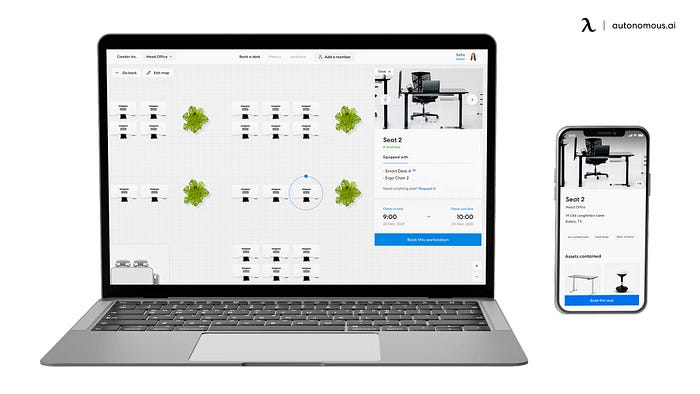Several Hybrid Work Variants and Their Practices

What Does Hybrid Work Mean?
When we think of traditional work, we think of going into the office at 9am and ending our day at 5pm. However, given the recent global events, there has been a shift towards a hybrid work model. What does it mean to have employees or employers promote hybrid work? Hybrid work means combining the options of working from home with going into the office.

Though it may seem that there is only the option of either work from home or work from the office. The reality is, there are various hybrid work variants that both employees and employers can agree on that are going to foster a positive workspace.
Four Types of Hybrid Work Models
Depending on your industry and your company’s needs, different hybrid work arrangements may be considered. Some may work while others may not, simply because of the format of one’s business.
Here are four hybrid work models to consider when the time comes to return to the workplace.
Fully Remote

Many people have had to turn their dining room table and kitchen chairs into a makeshift office since being forced to work fully remote. However, over time, the learning curve subsided, and many were able to furnish their homes with proper office equipment.
From office chairs to desks, suddenly, being fully remote wasn’t so bad. As things begin to gradually improve, there is a push from employees seeking to be fully remote. In this particular work arrangement, employees work from home and no longer return to the office.
Pros of Fully Remote
- Financial savings for the company with not needing a physical office space
- Can work anywhere in the world, does not have to be the same city or country.
- Work-life balance
Cons of Fully Remote
- Hard to collaborate
- Different time zones may need to be factored in
- May not have enough space to create an office or workspace
Flexible Remote

Of the hybrid work best practices, a flexible remote is the ideal happy medium. Why? It allows employees and employers to work out an arrangement that sees a mix of in-office and homework. With this, companies may choose to work with their management team on how they plan to support employees who prefer a flexible hybrid work arrangement.
Pros of Flexible Remote
- Offers employees the option of working remotely or going into the office.
- Cost-saving for employers who can provide working hubs
- Work-life balance
- Flexible in choosing and setting their schedule
- Access to office resources and new office technologies
Cons of Flexible Remote
- Requires scheduling to ensure there are enough desks and space
- Harder to coordinate between in-office and out-of-office employees.
Static

Some companies may give their employees a “one or the other” option when it comes to a hybrid work model. Choosing the static option means determining whether or not you are going to be in the office full time or remote full time. This hybrid work variant makes it possible for team leads and managers to manage a team with employees who are both hybrid remote work and in the office.
Pros of Static
- Predictable — employers know who is coming in or working from home.
- Collaboration and teamwork are better in person
- Structure for colleagues
Cons of Static
- Commuting to the office
- Costs rises
- Less flexibility and work-life balance
Synchronized Remote

Of the hybrid work variants out there, synchronized remote is one that combines the best of working from home with being in the office. How so? It allows for collaboration amongst teammates and team leads. In this type of work environment, the team collectively decides on when they are going to all go into the office and when they are working remotely. Hence, the synchronization of it.
Pros of Synchronized Remote
- Collaborated team effort to work in unison.
- Work-life balance
- A structured schedule of who goes into the office.
Cons of Synchronized Remote
- Limited flexibility
- Costs — transportation and office space.
Hybrid Work Best Practices

Understanding the pros and cons of the various hybrid work models is one thing; however, if you want to succeed or successfully transition from one over another, consider the following best practices.
Provide Training and Support
Going back to the office or accepting a new reality where working from home is the new norm can be stressful. To help alleviate these feelings, however, employers or team leads can provide training and support. This support can include having team meetings or mentoring sessions. They should be trained how to use and apply hybrid working apps in their remote working. The goal is to make the adjustment bearable and to help them adapt.
Create a Strategy

Returning to the office may be a phased approach for some companies and teams. To ensure a smooth and effortless transition, companies and team leads can create a strategy that outlines the path to normalcy and regular business operations. The strategy can feature the business or company’s approach to a hybrid work model.
Promote Equality
Promoting equality amongst colleagues can be hard to establish. However, a company can work towards equality by ensuring those who work from home have all the necessary resources and equipment that those who choose to work from the office have. This can be challenging for managers or team leaders who offer synchronized or a mixed hybrid work from home alternative. Managers should develop plans to enhance the workspace layout management in the hybrid work variants. The goal of making this transition, whatever it may be a success, is to create equality and to not make some employees feel more valued or appreciated than others.
Highlight Expectations

It is essential that when a hybrid model is being created for employees, the expectations are highlighted for everyone. This is important as it prevents any possible discrepancy. Still, more importantly, it highlights what is important or expected of the employees based on their working preferences. For example, when one used to work from the office, they knew their schedules and expectations; however, this isn’t working remotely. Now, one’s work schedule is slightly more flexible. This can sometimes lead to issues between team leads and employees on what is expected of their “working time”. Avoid this by having clear expectations of what a “working day” looks like.
Conclusion
A successful hybrid work variant is only going to succeed if employers and employees work together. This new reality of remote and in-office work can be a success.
